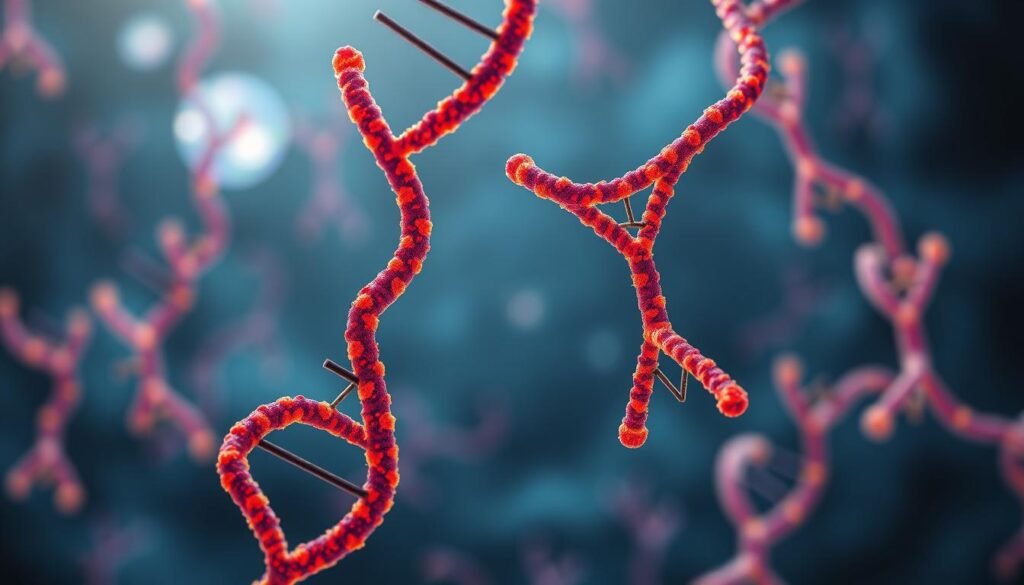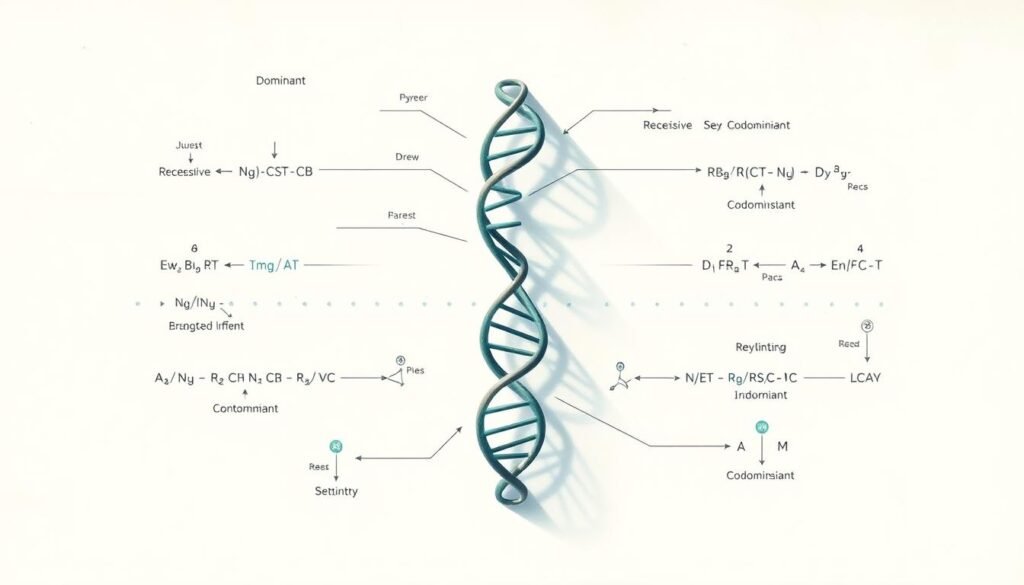Have you ever wondered why you or your daughter might share certain traits with your father? From the color of your eyes to the texture of your hair, the influence of paternal genes plays a fascinating role in shaping who we are. As someone deeply interested in the science of heredity, I find it inspiring to explore how genes from our parents contribute to our unique characteristics.
Understanding the basics of DNA and chromosomes is key to grasping how genetic material is passed down. Each of us inherits 23 chromosomes from our father and 23 from our mother, making up the 46 chromosomes that define us. Interestingly, research suggests that up to 60% of active genes may come from our father, influencing everything from our height to our predispositions.
This article will delve into the intriguing world of paternal genetic influence, exploring how sex characteristics and physical attributes like hair texture are shaped by the genetic material we inherit. Whether you’re curious about the science behind family resemblances or simply want to understand more about your own heritage, this journey into the world of genes and inheritance is sure to inspire a deeper appreciation for the complexity of life.
Key Takeaways
- Paternal genes significantly influence traits like height and hair texture.
- Up to 60% of active genes may come from the father.
- Sex characteristics are determined by the father’s contribution of an X or Y chromosome.
- Genetic predispositions can affect mental health and physical attributes.
- Understanding genetic inheritance fosters a deeper appreciation for human complexity.
For more insights into family dynamics and parenting, check out this review of “Keep Your Cool When Parenting, which offers practical advice for nurturing strong family relationships.
Understanding the Foundations of Paternal Genetics
Curiosity about our origins often leads us to explore how much of who we are comes from our parents. This fascination with inheritance sparked my journey into the world of genetics.
My Personal Journey into Genetics
Growing up, I noticed how my eye color and hair texture mirrored my father’s. This curiosity led me to study genetics, uncovering how inherited traits shape our identities. Each of us receives a unique blend of DNA from both parents, creating the mosaic of features we see in the mirror.
The Significance of Inherited Traits in Our Lives
Inheritance extends beyond physical appearance, influencing health and even behaviors. For example, certain eye conditions and hair textures often show a paternal influence. Understanding these traits not only explains family resemblances but also provides insights into our health and well-being.
Research highlights how up to 60% of active genes may come from our father, affecting everything from height to health risks. This knowledge fosters a deeper appreciation for the intricate dance of genetic material that makes us who we are.
Exploring Inheritance: Genes, Chromosomes, and DNA
Unraveling the mysteries of how we inherit characteristics from our parents is a fascinating journey. At the heart of this journey lies the interplay of genes, chromosomes, and DNA.
Dominant Versus Recessive Genes
Genes come in two forms: dominant and recessive. Dominant genes will always show their characteristic if present, while recessive genes only show when there’s no dominant gene to mask them. For example, if you inherited a dominant gene for brown eyes, your eyes will be brown, regardless of the other gene. This explains why some traits seem to skip generations.
| Gene Type | Example | Expression |
|---|---|---|
| Dominant | Brown Eyes | Always visible if present |
| Recessive | Blue Eyes | Only visible without dominant gene |
The Role of DNA and Chromosomal Pairing
Each parent contributes one chromosome to each pair in their child, making up 23 pairs in total. This 50% contribution from each parent is why we often see a mix of their characteristics in us. For instance, your height might reflect a blend of your parents’ heights.
genetic traits passed from father to daughter
Exploring the connection between my father and me, I often notice how certain characteristics seem to mirror his. These similarities are more than just coincidence—they are a testament to the power of inherited genetics.
How My Father’s Genes Shape My Identity
My height, for instance, is a clear example of a trait inherited from my father. Standing at 5’8″, I often hear that I resemble his side of the family. This isn’t just a casual observation; research shows that up to 60% of active genes can come from our father, influencing everything from our stature to our health risks.
| Characteristic | Paternal Influence | Maternal Influence |
|---|---|---|
| Height | IGF protein promoting growth | IGF2R regulating growth |
| Disease Predisposition | Lynch syndrome, BRCA genes | |
| Hair Texture | FGFR2 gene variants | Diverse, less dominant |
Beyond physical traits, genetics also play a role in health. For example, my father’s family has a history of heart disease, which I now understand could be linked to genetic markers inherited from him. This knowledge isn’t frightening; it’s empowering, as it encourages me to make informed lifestyle choices.
While I cherish the traits I’ve inherited from my father, I also recognize the equal influence of my mother’s genes. However, it’s fascinating to see how certain characteristics, like my height and even some personality traits, have a stronger paternal influence. This blend of genetic material makes me who I am, and embracing it fosters a deeper connection to my heritage.
For those interested in understanding more about their genetic background and how it influences their health, I recommend exploring resources like our terms of use for insights into family health and wellness.
The Role of Sex Chromosomes in Daughters’ Inheritance

Sex chromosomes play a crucial role in shaping a daughter’s genetic makeup. These chromosomes, either X or Y, determine not just gender but also influence various traits and health conditions. Understanding how these chromosomes work can provide insights into family health and inherited characteristics.
Mechanics of X Chromosome Inheritance from Dad
Fathers contribute an X chromosome to their daughters, which combines with the mother’s X chromosome. This inheritance is unique because the X chromosome carries genes that affect both physical and behavioral traits. For example, certain conditions like color blindness or hemophilia are linked to the X chromosome.
Impact on Physical and Behavioral Characteristics
The X chromosome influences more than just gender. It carries genes that affect height, hair texture, and even some behavioral traits. For instance, studies suggest that the X chromosome may play a role in determining certain aspects of personality and cognitive abilities. Additionally, X-linked conditions can impact health, with some being more prevalent in females due to their two X chromosomes.
Understanding the role of sex chromosomes can empower families to make informed decisions about health and wellness. By recognizing how these chromosomes influence our traits and health, we can better appreciate the complex interplay of genetic factors in our lives.
Shaping Health and Appearance Through Paternal Genes
Have you ever wondered how your health and appearance are shaped by the genes you inherit? The connection between paternal genes and our well-being is a fascinating topic that reveals how much of who we are comes from our parents.
Eye and Hair Traits Explained
Eye color and hair texture are classic examples of how paternal genes influence our appearance. For instance, the color of your eyes is determined by multiple genes working together. If your father has brown eyes, there’s a higher chance you might too, as dominant alleles often come from the paternal side. Similarly, hair texture is influenced by genes like FGFR2, which can determine if your hair is curly, straight, or wavy.
| Trait | Paternal Influence | Maternal Influence |
|---|---|---|
| Eye Color | Brown (dominant allele) | Blue or green (recessive allele) |
| Hair Texture | FGFR2 variants | Diverse, less dominant |
| Height | IGF protein promoting growth | IGF2R regulating growth |
Understanding Genetic Disorders and Health Risks
Genetic disorders like heart disease can also be linked to paternal genes. For example, if your father has a history of heart disease, you might be more at risk due to inherited alleles. Environmental factors, such as diet and lifestyle, can also influence how these genes express themselves. Understanding this connection can empower you to make healthier choices.
In conclusion, while we inherit genes from both parents, the paternal influence plays a unique role in shaping our health and appearance. By learning more about your genetic legacy, you can gain insights into your health and make informed decisions for a better future.
Decoding Inheritance Patterns and Genetic Variation

Genetic inheritance is a fascinating puzzle, with each piece shaped by the unique interplay of genes from both parents. While we inherit half of our DNA from each, the way these genes express themselves can vary significantly.
The Influence of Genomic Imprinting
Genomic imprinting adds another layer of complexity to inheritance. This phenomenon, where genes are expressed differently based on their parental origin, plays a crucial role in determining certain traits. For instance, height is influenced by the IGF protein from the father and the IGF2R from the mother, showcasing how imprinted genes can shape our body characteristics.
Mysteries of Alleles and Trait Expression
Alleles, different forms of the same gene, interact in complex ways to produce specific traits. Eye color is a prime example, where multiple alleles work together. While a father may contribute a dominant allele for brown eyes, the mother’s recessive allele might influence the final shade, resulting in varied color expressions among offspring.
These variations aren’t limited to physical traits. They also extend to health predispositions, with certain cases showing a higher risk due to inherited alleles. Understanding these genetic variations helps us appreciate the intricate dance of DNA that makes each of us unique. For deeper insights, explore genetic inheritance patterns and their impact on our body and health.
The Interplay of Environment, Lifestyle, and Genetics
Our genetic makeup is just one part of the story when it comes to who we are. The world around us—our environment and lifestyle—plays a significant role in how our genes express themselves. This dynamic interplay is a fascinating area of study, revealing how external factors can shape our health and well-being.
How My Lifestyle Choices Reflect in My Genes
Personally, I’ve noticed how my lifestyle influences my health. For instance, regular exercise and a balanced diet have helped me maintain a healthy heart, which I believe complements the genetic material I’ve inherited. This connection between lifestyle and genetics isn’t just personal; studies show that healthy habits can reduce the risk of certain conditions, even when there’s a genetic predisposition.
From a scientific perspective, our genetic material is influenced by factors like diet, stress, and physical activity. These elements can activate or silence certain genes, affecting everything from our energy levels to our susceptibility to illnesses. For example, a receptor in our cells might respond differently based on whether we eat a nutrient-rich meal or a processed one.
Research highlights how lifestyle choices can significantly impact our health. For example, adopting a heart-healthy diet can reduce the risk of cardiovascular diseases, even if there’s a family history of such conditions. This emphasizes the importance of mindful choices in shaping our well-being.
Modern science underscores the balance between nature and nurture. While our genetic material provides the foundation, it’s our environment and lifestyle that build upon it. By understanding this relationship, we can make informed decisions that enhance our health and quality of life.
In conclusion, the interplay between environment, lifestyle, and genetics is a powerful reminder of our ability to influence our own well-being. By embracing healthy habits, we can harness the potential of our genetic material and create a brighter, healthier future for ourselves and our families.
Conclusion
As we conclude our journey into the fascinating world of paternal genetic influence, it becomes clear that our human experience is deeply intertwined with the DNA we inherit. The connection between a father and daughter is more than just emotional; it’s rooted in the very essence of our biology.
The insights gathered from scholarly sources and personal reflections reveal how paternal genes shape various aspects of our lives. From physical characteristics like height and hair texture to health predispositions, the influence is undeniable. This understanding not only explains family resemblances but also empowers us to make informed decisions about our well-being.
Embracing our unique genetic heritage is a celebration of life’s complexity. By recognizing the role of paternal genes, we gain a deeper appreciation for the intricate dance of DNA that makes each of us who we are. For those eager to explore more about their genetic background, resources like the SneakPeek test offer valuable insights into our genetic makeup.
In the end, our genetic legacy is a testament to the enduring bond between generations. It’s a story written in our DNA, guiding us toward a future where understanding our roots fosters a brighter, healthier tomorrow for ourselves and our families. Let’s cherish this unique human experience and the profound impact one generation can have on the next.








0 responses to “Decoding Paternal Genetic Influence on Daughters”
Interesting read! Does the paternal genetic influence extend to personality traits, or just physical ones? The article seemed somewhat unclear on this.
Yes, it does extend to personality traits. Read between the lines next time.
Isnt it fascinating how our Dads genes can shape our lives? Makes me wonder if were just walking expressions of paternal genetics!